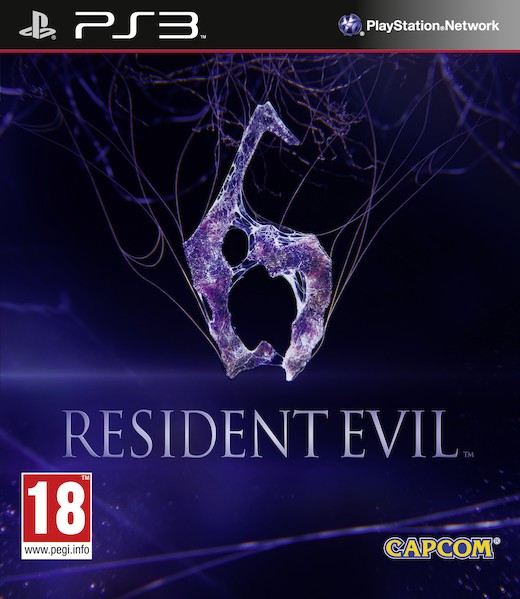You’ve got to feel for Capcom. It’s been obvious from the start that they’ve stuck their necks out for Resident Evil 6, and it’s even more obvious once you actually play the finished product that it hasn’t paid off. While this latest entry in the once storied series isn’t an unmitigated disaster, it definitely teeters on the edge of becoming one, only to be saved by the occasional moments of bombast that series fans can’t help but fall in love with.
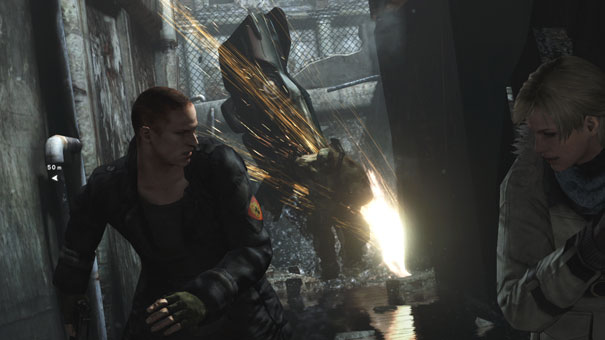
What you can’t accuse them of though, is paucity of content. There are four campaigns, each eight hours long, for you to pick from initially, with a fourth unlocking immediately after. That’s a lot of video game, and it’s a pleasant surprise that Capcom didn’t hold some of it back as post-release DLC. Each of these campaigns features returning faces from past games (Leon S. Kennedy, Chris Redfield and Sherry Birkin) paired up with newcomers (secret service agent Helena Harper, BSAA sniper Piers Nivans and mercenary Jake Muller). The fourth campaign features perennial double agent Ada Wong going it alone for the moment, although an upcoming free DLC pack will unlock a co-op partner for her as well. The game also lets you play as any of its soon-to-be eight characters; which is a nice touch given their slightly varied abilities and occasional branching paths through levels.
The second character is a constant companion, either by way of artificial intelligence or via online or split-screen co-op. Those playing solo and dreading a similar experience to baby-sitting Sheva in Resident Evil 5 can rest easy. Your shadows now appear to have unlimited ammo and health, along with enough upper body strength to free themselves from a zombie hug. Unfortunately, they also have a tendency to get flustered when fighting against multiple targets in large open spaces. Standing next to enemies without lifting their firearm is common, as is shooting walls and prioritising the wrong targets.
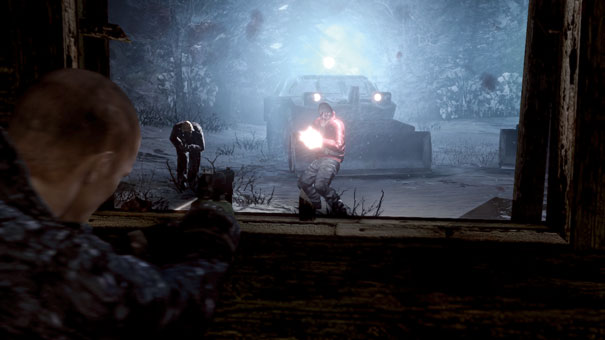
There are also instances where campaign timelines intersect, leading to opportunities for four-player co-op encounters. The game automatically matches you with potential partners online, which seems neat until you realise that some of these moments repeat themselves, such as fighting the same boss encounter across two campaigns. You can also choose to invade other peoples’ games as one of the infected in the Agent Hunt mode, which again sounds like a blast if only it weren’t for the awful camera and controls.
The story itself is suitably epic, jumping timelines and locations like nobody’s business. The C-Virus is loose again and it’s up to the old gang to thwart another conspiracy, this time involving a shady ‘Neo’ Umbrella Corporation. It isn’t high fiction, but the cutscenes are well directed, the action intense and well-choreographed, and the voice acting as well as the soundtrack are stellar. The enemies (called J’avo) unfortunately, are less so, morphing from generic soldier types to grotesque monstrosities and still managing to feel dull.
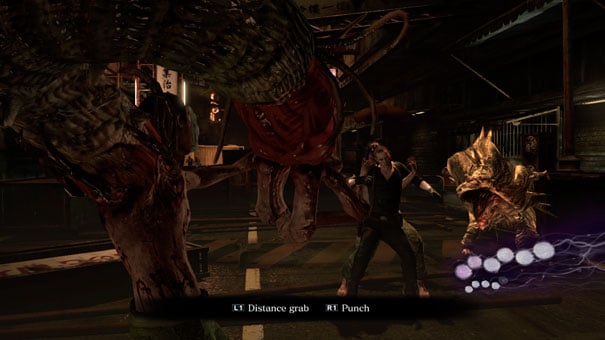
The globetrotting is pervasive. You’re in a rather generic Eastern European country in one level before jetting off to urban China the next. Leon’s campaign is a tad more noteworthy visually thanks to its contemporary environs chock full of fan service to older games in the series. It’s also filled with old-school zombies and small-town American sets. Sprinkled between all the gunplay are fewer puzzles than before, but aside from that, you now have the ability to move and shoot, which probably signifies best the game’s shift away from a more deliberate pace. The revamped health system has you converting herbs to pills, which are then equipped to your right trigger. Your health gauge is divided into six segments and each segment will recharge as long as it isn’t fully drained out.
Replacing the much-loved merchant are skills that you purchase from a menu using points you earn in-game. You’ll need a ton of skill points to buy some of the cooler upgrades though, so there’s plenty of incentive to fight rather than run. Pulling your left trigger displays an on-screen GPS that leads you to your next objective. This is a god-send on some of the more annoying levels, where you’ll have no idea where to go next. Diving, rolling about and crawling into cover are also possible, and something that Max Payne 3 really ought to have implemented as well. It should be noted that the game doesn’t handhold you in terms of controls. You’ll have to figure out a lot of the more complex button combinations yourself.
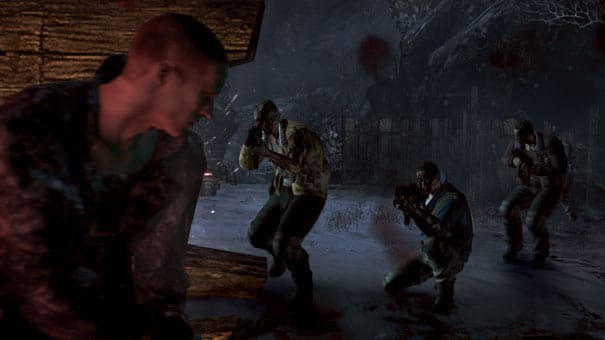
And controls are exactly where things start falling apart. There’s none of the visceral feedback you got from the shooting enemies in Resident Evils 4 and 5. Most of the weapons you come upon barely register on your foes, so you’re never sure how close you are to finishing them off. Lack of feedback aside, there’s not much point in targeting limbs in any case thanks to someone’s bone-headed design decision to let enemies morph into tougher versions of themselves when a particular limb is shot at.
Also irritating is the nauseating camera and the unusually close third-person perspective. Your character takes up way too much real estate on-screen, and this, combined with the aforementioned camera, narrow environments and multiple enemies, will cause more problems than you’d like. There’s an odd lack of ammunition in the game as well. You could argue that Resident Evil isn’t about gunning you way through levels, but that logic flies out the window when the J’avo all have automatic weapons in addition to their ability to mutate.
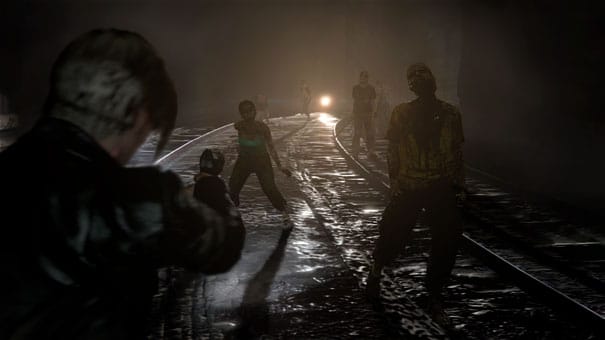
There’s a cover system that barely works thanks to you having to aim your weapon to actually use it. The increased focus on hand-to-hand combat is a decent addition, and it’s actually a viable tool in combat as long as you manage your stamina gauge. Unfortunately, the lack of a lock-on and abysmal feedback make it significantly less visceral than it should have been. I did like the pro-wrestling inspired move-set and the context sensitive environmental attacks, however.
In keeping with the scale of this game, you’ll be doing a ton of random activities, none of which are especially memorable. From driving vehicles to manning turrets to fleeing avalanches in snowmobiles, this game clearly wants to do it all. Capcom apparently also has an unhealthy love for QTEs as they’re liberally sprinkled throughout to the point of annoyance. The game also loves re-centering the camera at a random cinematic angle at the most inopportune of movements. Consider yourself lucky if there are no enemies around when it does this, or else they’ll take what cheap hits they can get.
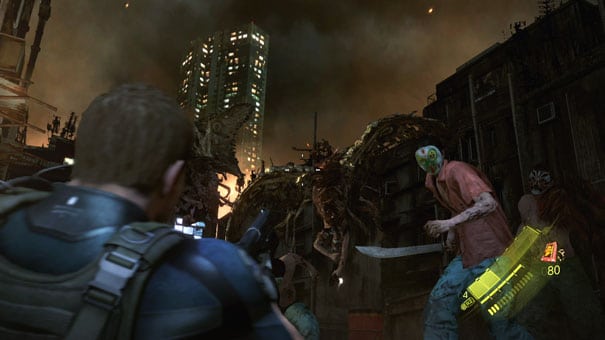
Conclusion
I don’t want to fault the scale of the game or its preference for summer-blockbuster action, as you wouldn’t really feel it weigh your experience down as much if the controls were tighter and the enemies less of a bore. While the minute-to-minute gameplay isn’t broken, it just isn’t fine-tuned to the extent that it should be for a game of Resident Evil’s calibre. Everything else the game does right, from the lengthy campaign, to the returning Mercenaries mode, to the excellent presentation, cease to be of importance to anyone but the most dedicated Resident Evil fan. If you’re into the series and don’t mind putting up with its thoroughly average controls, Resident Evil 6 may be worth your time. Everyone else might want to give it a look when it’s discounted, if only to see how far the series has fallen from its prime.
